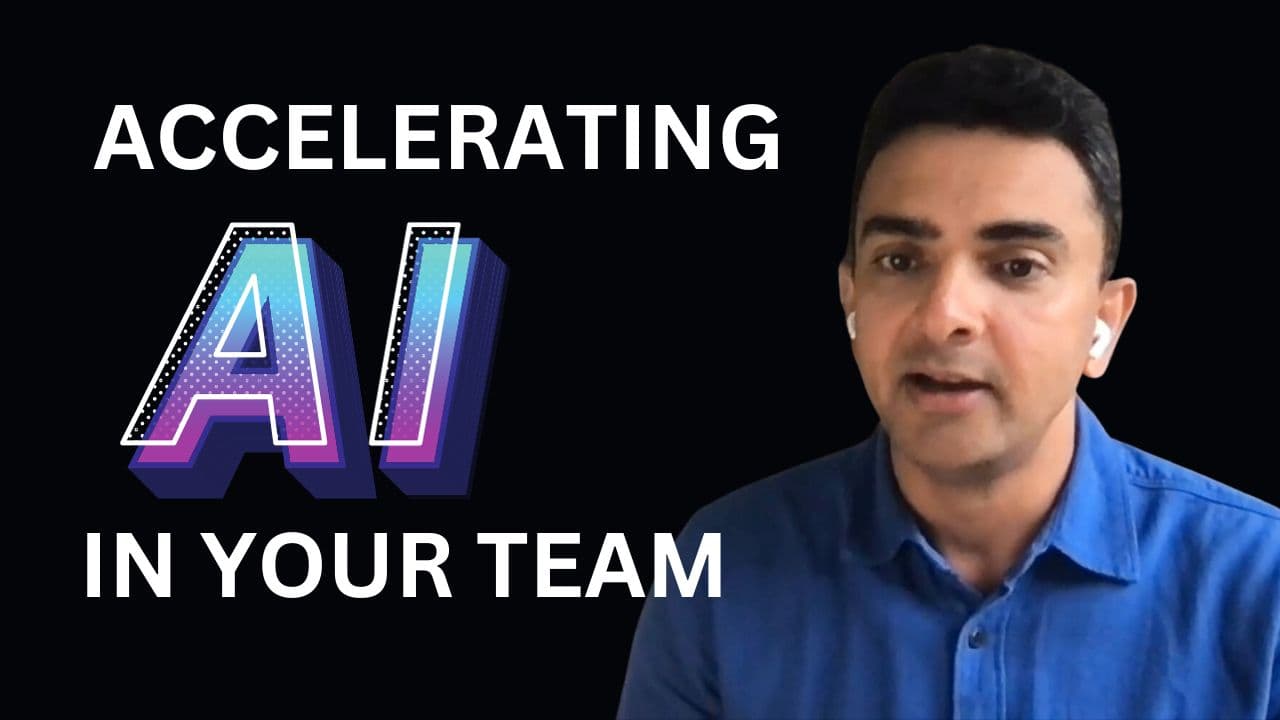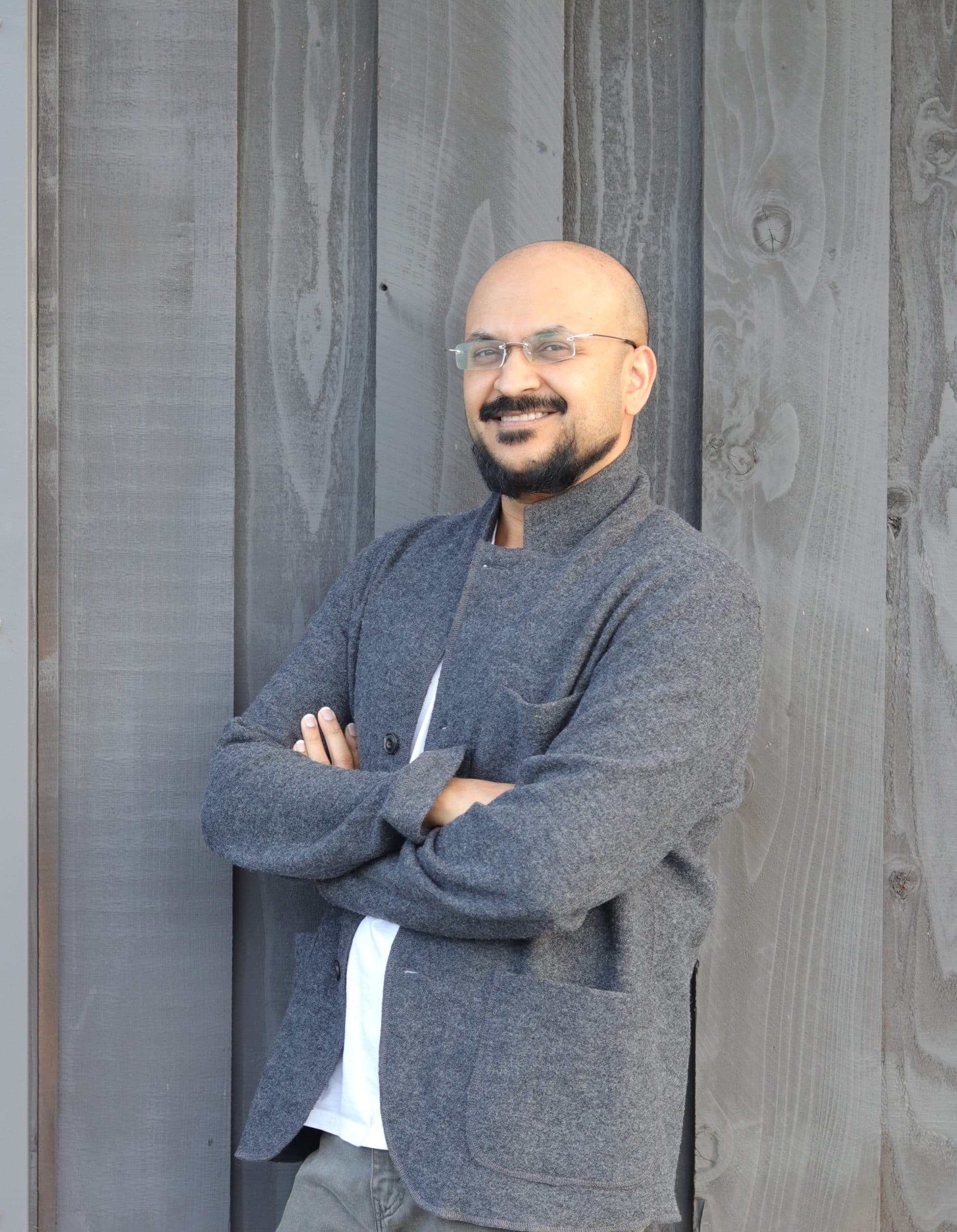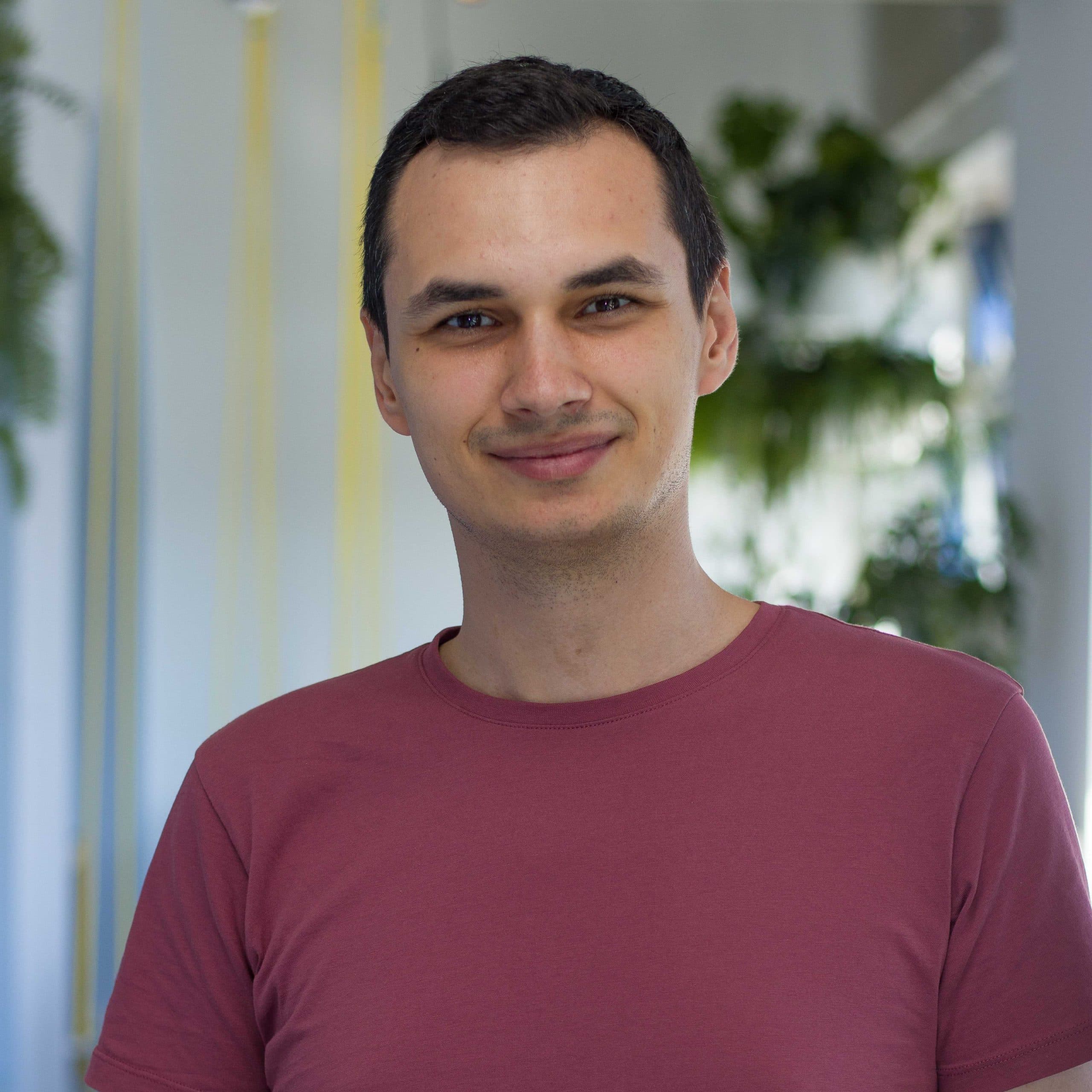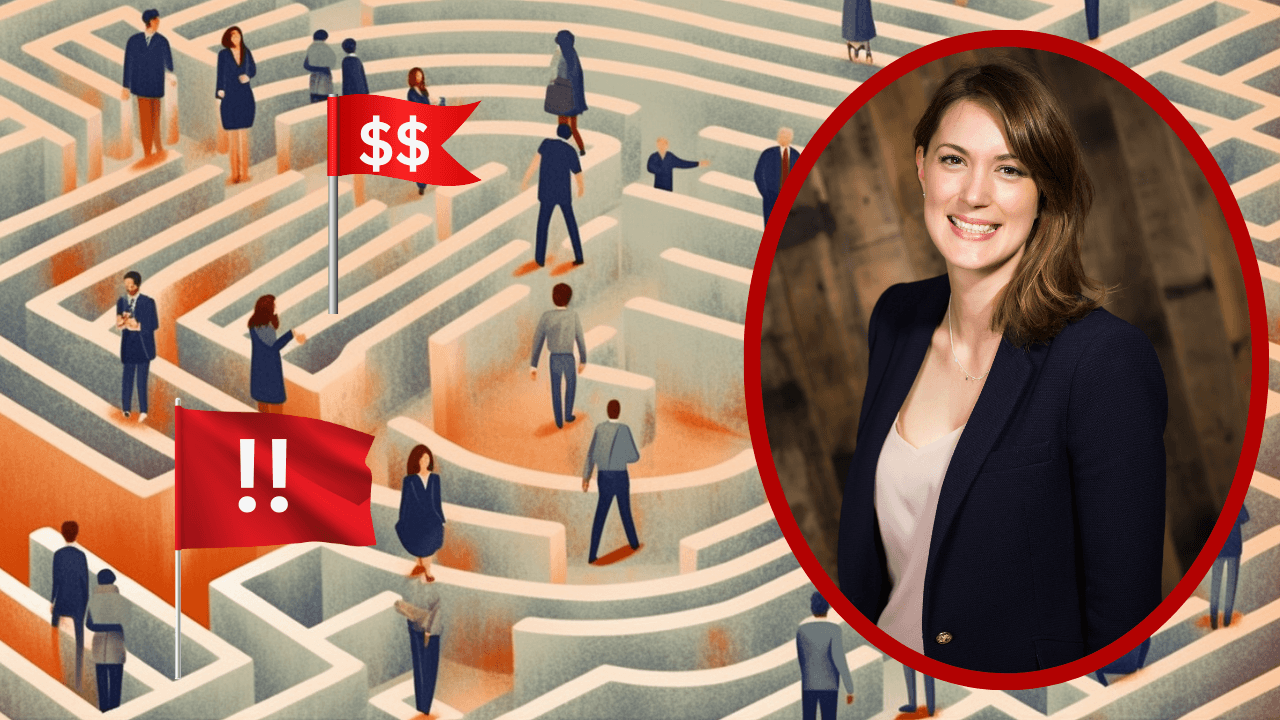Interview with Yannis Pavlidis, Senior Director of Data Science at Walmart eCommerce
Published on May 18, 2021
20 min read

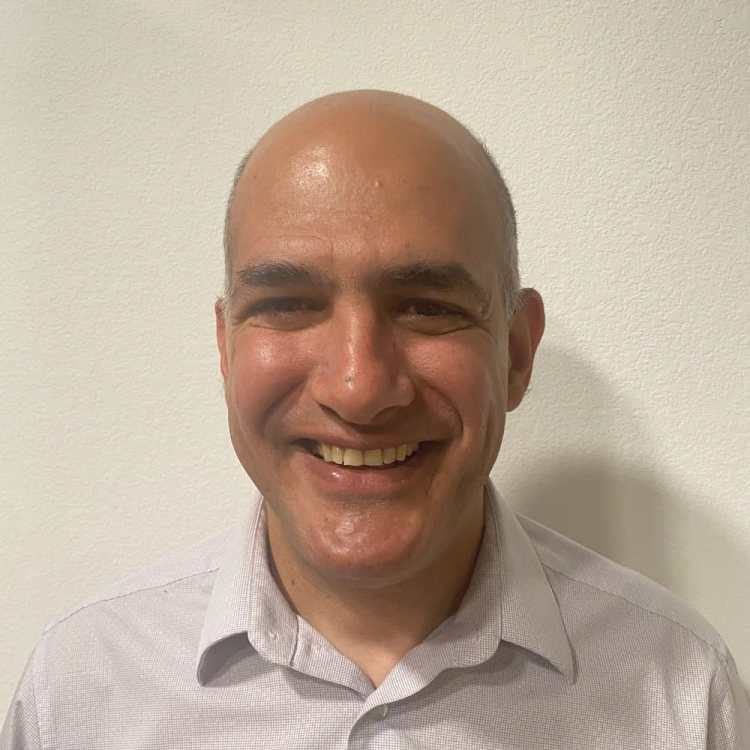
Vidal: [00:00] Hey, good afternoon today. I have with me my friend Yannis who’s a senior director of data science at Walmart. Welcome, Yannis, to ManagersClub.
Yannis: [00:06] Hey, how’s it going?
Vidal: [00:08] Good man. Thanks for coming on.
Yannis: [00:10] Good it be here!
Table of Contents
Toggle
- What’s your background and how did you get into management?
- What are the biggest challenges you face as an engineering leader?
- Could you share with us a lesson you learned as an engineering leader?
- What is your approach to hiring?
- What’s your advice for managers who are just starting out?
- What’s your workday like and how do you manage your time, emails, calendar, etc.?
- What’s a personal habit that contributes to your success?
- Share an internet resource, app, or tool that you can’t live without.
- If you could recommend one book to managers, what would it be and why?
- What is your approach to developing, mentoring & coaching members of your team?
- What does it take to be a great engineering leader?
- Where can we go to learn more about you?
What’s your background and how did you get into management?
Vidal: [00:11] Tell people a little bit about your background and how did you get into management?
Yannis: [00:16] Yeah. I, as many people in the field, was an individual contributor and then transitioned, through my technical expertise, to be a tech lead, and then, the right opportunity arose with one of my mentors. He did see in me some qualities around people management.
With the right guidance from him, I was able to transition from purely being a technical leader to being somebody who could also manage people and have the ability to mentor them and then guide them to the right career path. But yeah, I was very grateful for my mentor.
What are the biggest challenges you face as an engineering leader?
Vidal: [00:46] That’s awesome. What are the biggest challenges you face now as an engineering leader?
Yannis: [00:50] At the group that I am right now, one of the mandates that we have is to try to build horizontal services. So I’m part of Walmart international, and we work like with 40 international markets. And they want us to really build leverageable services and data science models.
So one of the biggest challenges is to obviously connect with each of the markets. Sit down, understand what the needs are, be part of the roadmap conversation, but then try it and then try to collect all that information and then guide the team. I’m also playing the role of a product leader, trying to guide the team through what is the common denominator that we should be building to fulfill the data science needs of the markets. So I would say that’s the biggest challenge. We try to typically find the common elements over data science models, and that’s about 70% are common, like on an e-commerce site, 70% I would say are common, but then, the rest of the 30%, we try to cater to the individual needs of each of the markets, in some of the markets are.
We’ve done with the urban areas such as Mexico and the UK, some other markets are like, a mix of urban and suburban. There are some other ones very similar to the U.S. That’s part of our main challenge.
Could you share with us a lesson you learned as an engineering leader?
Vidal: [02:02] Interesting. Could you share with us a lesson you’ve learned as an engineering leader?
Yannis: [02:05] I think in this age we know that we, things are moving so fast. It is impossible. As a leader, to manage in any top-down way. It’s impossible to know everything that is happening. So the biggest lesson that I learned is to cultivate psychological safety.
What I mean by that is create an environment where everybody on the team could have a voice to express their opinion and then be able to contribute technically with ideas. Or like ideas at the beginning, or product ideas or data science ideas, or like things that we could improve on the product.
But that, and that’s how I realized that’s the only way that the team can scale. So like at least I can know, certainly a lot of cases, I post questions to the team about how we can address a problem. And then I really rely on them because they have psychological safety, they feel empowered to express their opinion, to have a conversation.
And that eventually, collectively we like align or converts towards to the right solution. But I find it, very important question of the team to not be afraid to express your opinion. And that’s, for me, the biggest thing that I’m trying to cultivate.
And of course, during the pandemic, I have to say empathy is another thing that, like every leader should to demonstrate, like at least understanding, you know, the individual needs of expression of the team. Some of them had families, some of them couldn’t have families.
Some of them are like introverts come with, some of them are extroverts, some of them could deal with the pandemic in a different way, try to build, tried to create opportunities for everybody to get together was one challenge. But the other one is how you create an environment for each one of them to be continued to thrive.
Have a really good mental health cause like, it was really challenging for some of those people. But then, let’s just continue to have a cohesive team. As we continue to meet some of the higher demand that our websites were facing during the pandemic.
Vidal: [04:01] These are both really good things. Could I just ask a little more you say you pose questions to the team? Do you do anything else to promote psychological safety? It’s such an important concept.
Yannis: [04:09] One thing that we started doing over the last couple of years is to one of the challenges of data science is its unpredictability. So at least when you’re trying to plan, I would say some of the aspects of software engineering are much more predictable comparing to data science that there is a lot of experimentation that is happening.
So in a lot of cases, we, as data scientists, when we try to deliver something into production, we try to not be the bottleneck. So when we do that roadmap planning, we always try to allocate our capacity around 70 to 75%. So this is what are we trying to do? And the rest of the twenty-five percent, it’s either things that the team feels compelled to experiment on or like we really want to start an item that is going to be coming up in the next quarter to start experimenting with that If we feel that it’s challenging.
That comes through the research with experimentation, so I feel that’s another area, though. You could actually cultivate psychological safety is like through promoting the culture of experimentation and being data-driven. So to allow them to try different things and then also allow a culture of failure, and then I don’t call it failure.
Typically, I call them learnings. So at least they can know what can we learn? So we celebrate our successes, we celebrate our failures. But regardless of those, what did we learn? And then how can we build all those learnings? At least that’s another thing that we’re trying to do at least try to push them to, learn new things.
And especially, like most of them have a growth mindset, they read papers, they want to build, like different techniques. So like at least, and in some cases, you need to allocate some time for that. So at least that’s one of the things that we do.
Vidal: [05:47] That’s really interesting. So you’re describing that there’s more unpredictability in data science and so you allow more buffer time. It sounds like more time for doing spikes and research. So that’s very interesting. And then one of the things you mentioned during the pandemic, like trying to get people like mental health and empathy, is there anything that you have found like really successful for that with your team?
Yannis: [06:08] Yeah. So the group that I’m part of, which is the Walmart international group that we’ve instituted Wednesday afternoons that were no meetings. And then everybody was really tried to observe that. And we also instituted because we work a lot with international markets. And also, we have an offshore team in Bangalore.
We instituted for people to have a better work-life balance, strict hours where we cannot have meetings. So for example, after 4:00 PM Pacific time, you were not allowed to have a meeting, unless for something really urgent. Everybody had to agree. So that’s some of the things. And then, we started it experimentally for the first three months and then people really enjoyed it.
So we continued having those, even at the moment that we speak right now. And then everybody observes them. Everybody is really respectful of those things. And the other thing that we did is we also, at least they, the leadership created a campaign called “It’s Okay.” And that meant that it’s okay for us to decline a meeting it’s okay for us to move a meeting because we got to spend time with a family. So at least create those avenues or create safeness so people could start to have more of a work-life balance. Cause that was the biggest challenge.
People were not prepared for that. Like absolutely. Like either with the kids at home or they didn’t have the right set up, so that was the biggest challenge will be you know what I can eventually right now they adjusted, or at least in the early days, there wasn’t much of life and work balance.
What is your approach to hiring?
Vidal: [07:30] I think that’s really great. Thanks for sharing about the it’s okay. Program. That sounds really good. Let’s moving on to hiring. What is your approach to like hiring and recruiting, especially these days?
Yannis: [07:39] I would say, obviously we have always, it depends for me, the hiring and recruiting depends at the stage that the team is at. Like at least right now, the team has grown, and without a stage where we have built the right foundation, so we can start bringing in younger team members or more inexperienced team members, either through our internship program or, if they have only a couple of years of experience, as you probably know since you’re based at the Bay area, there’s huge competition with other technology companies. So in some cases, we have to find, if you want to keep growing the team, we have to find those young and smart people that can actually join the team.
But the thing that we changed during the COVID recruiting time was like We also try to spread out, obviously the interviews across different days. So like at least right now, when we interviewed with somebody, at least on the virtual onsite, like typically, those interviews happen over the course of two or three days.
And in some cases, it spans on a couple of weeks because it’s can be really overwhelming for a candidate to be on a video call for four or five hours straight. So at least that’s something that we have changed. And then the other thing, as a group that we’re trying to push is like also try to push as much as we can diversity.
Not only in the data science group that we have but also in the whole engineering group that we have. So in some cases, we ask our sourcers to try as much as we can to source diverse candidates. And then we try to review those first to at least try to increase diversity in the group.
Those are some of the things that we are trying to do that I’m very fortunate to have three or four key senior leaders on my team that at least they are able to do mentorship. So at least it can allow us to be able to grow the team by beginning new members, younger members more inexperienced, but at least the very talented.
Vidal: [09:15] I think that’s really nice how you spread out the interviews because you’re right. Since they’re virtual, you don’t really have to do them all at once. Like when someone’s coming on-site, that’s a very interesting idea.
Yannis looking at your background, you’ve been a manager and a leader for a while like probably more than 10 years, right?
Yannis: [09:31] Correct
What’s your advice for managers who are just starting out?
Vidal: [09:32] What would be your advice for managers who are just starting out?
Yannis: [09:36] Just be authentic. Just be real, like at least really be authentic and empathetic. People really value and appreciate that. I least that’s my biggest advice. You don’t try to be somebody who you’re not. Like just really try to be yourself. Obviously, that’s the biggest advice I could give to somebody.
What’s your workday like and how do you manage your time, emails, calendar, etc.?
Vidal: [09:53] What is your workday like? How do you manage your time emails, et cetera? I assume you must be very busy as a senior director.
Yannis: [10:01] Yeah. I typically, A lot of the early calls, like a lot of the first couple of hours of the day, are conference calls with the UK and India to try to coordinate. So at least they can know if you see from Monday to Thursday, because at least Friday, evening in India, then we don’t have any meeting hours with them.
So Monday to Thursday, the first two or three hours are. Meeting with offshore teams then at least, I always tried to keep a buffer for about 30 to 45 minutes to at least they know either, go for a walk and, or answer emails during that time. And then typically also pick a day in the week typically early, what I’ve tried to have my team meeting with my directs.
And also, at least try to have bi-weekly tri-weekly meetings with other members of the team to see how they are and how they’re doing, but I’ve also, during the busy time I’m conducting more and more of my work on Slack because it’s a lot more immediate. And at least if I don’t have to, I try to avoid, try to resolve as much as we can decisions a bit of a Slack or email and try to avoid.
Meeting, like in excessive meetings, because in the beginning there was just too much excessive meetings. And I think there’s zoom, fatigue is real. And then the last part is. I try as much as I can to respond to all the emails by the end of the day, by the end of next day.
But at least I tried to prioritize, depending on, by who he came or like what the urgency of the issue, but at least they know I’m really trying to be respectful of everybody’s time and at least try to respond to the emails as quickly as I can. But yeah, a lot of this stuff that we’re trying to do right now is through Slack.
Vidal: [11:35] Do you have any tips for managing Slack? Because things like Slack, you can get bombarded by lots of messages, lots of long threads to follow. I’m just curious since you’re moving more to Slack, do you have any tips or tricks there?
Yannis: [11:49] Yeah. First of all, if you have a group, try to avoid the @here or the @all. I can see is because at least I can know those are; you could jump into that. But that’s like at least it’s really easy to lose things. So at least I can know, try to use as much as you can.
The threads realistic know the conversation can be lost, at least you could just want to inform things. So like at least we’re using a lot more of the threads right now. And yeah, those are the two major ones. And then I’m trying, and that’s my personal tip. I’m trying to.
Turn off my notifications on my phone, on Slack. Cause at least when I’m going out and going for a walk or like at least I’m trying decompress, and really trying to be present. So at least that’s the other advice I’m turning off my Slack notifications on my phone.
Vidal: [12:33] Okay.
Yannis: [12:34] That’s not like a tip, but at least they can have those kind of something was, I said, it’s gonna be very distracting to, like at least the early days I was out on a walk. And are you constantly getting bombarded? And then it’s really hard to be present. And obviously you need to escape a little bit.
So at least you’d be able to recharge.
Vidal: [12:52] That’s good advice. Yeah. I turn off lots of notifications on my phone. Cause otherwise your phone is going to always be going off with either text message or Slack message or an email, it’s kinda hard to focus with all that.
What’s a personal habit that contributes to your success?
Vidal: What would you say is a personal habit that contributes or has contributed to your success?
Yannis: [13:10] I would say reading. I would say two things, number one to the one topic that we were discussing before trying to be empathetic and real as a leader. So that’s the one part and the other one is to try as much as possible to keep up either directly by reading news either, like industry news or tech-based news.
But also, keep up with that by your team members, pushing you some of that information. So some cases you could find, retail news, or you could find papers that you read. And then some other cases as I said, you can’t find everything.
But for me, a leader has to continue to be a master of his craft. To some extent if they, they want to continue to be relevant. So you get up, you gotta be authentic. As I said, as a people’s manager, but I ended up, this is all your craft. You’ve got to continue to be at the master of your craft.
Share an internet resource, app, or tool that you can’t live without.
Vidal: [13:59] I think that’s great. Yes. And I got to say, man, I worked with you, and I think you always took this on as your very authentic and easygoing. Very so I think that’s really great. Is there an internet resource, app or tool that you really like, that you use at work, maybe besides Slack that you find essential?
Yannis: [14:18] HBR has always interesting management articles. So that’s one source. And then, the thing that I would advise people is that even on paper, even if on paper, You read an article and then you realize, Oh, that doesn’t apply to my domain.
I think the biggest aha moments that I have found is that how can you take a lesson from one business segment and try to apply it into your own business segment? So at least, HBR it’s a good, really good source. And then I typically the other blog that I’m reading is like the tech, me me blog, techmeme.
Like at least there’s always like interesting. They’re like really, we do a really good job of filtering the right stories. That those are the two things that I always check.
If you could recommend one book to managers, what would it be and why?
Vidal: [14:53] All right. I’ll have to check it out. On the topic of reading, if you could recommend one book to managers, what would it be and why?
Yannis: [14:59] I would recommend the book from Clayton Christiansen. The How Would You Measure Your Life? Like it first couple of chapters made like profound impression to me because it helped me understand what are the important things that make somebody happy at work. But then the most important thing is the people and the work that you’re doing. In a lot of cases, people could complain about their perks or their parking or their benefits. But even if those were solved, when you go back home after a long day, it’s the work and the people that you surround yourself with say, are you going to give them the biggest satisfaction?
So at least I know that’s one of the things that I try to tell my team, and those are going to use it as my North star. In my career, surround yourself with people that you enjoy working with, and then always try to do things that you find interesting and, or you find impactful.
What is your approach to developing, mentoring & coaching members of your team?
Vidal: [15:49] That sounds good. I’ll have to check out that book. I don’t think I’ve read it. What is your approach to developing, the members of your team, people who report to you?
Yannis: [16:00] Listen to them and especially two things, number one, try to get to know them
as people, as much as possible, like at least in some cases on our one-on-one, we’ll talk about the weekend, if they want to open up, how was the weekend? What are some of the hobbies, like at least I know each person on my team, what their hobby is? So this is, try to get them to know as people that’s the first one and the second one is listen where they want to go into their careers? And at least I can know, try to help them on that. I think one of the biggest mistakes that I’ve seen is that in some cases, people think that if you’re becoming a tech leader, the only path after that is going to be people manager. I think that’s the biggest fallacy that I’ve seen.
Not everybody that could be a tech leader can also be a people manager or vice versa, so at least don’t apply any pressure to them and see whether they want to continue to be the master of the craft being individual contributor or a tech lead, whether they want to move into that and then. When we decide that how I how can I help them to get into that path? And then helping can be, resources, connecting them with other mentors that can help them on that path or, expose them to the right audience in some cases with the give presentations or, give them the right opportunities to lead a team or , to be able to showcase their talents.
But at least they know those two things. People appreciate that. Like at least as I said, if you’re authentic and you listen, and you help them get to the goals, I think that it gets you like really far.
What does it take to be a great engineering leader?
Vidal: [17:24] I think that’s great. And yeah, it’s like a totally different job too. One more question. So we talked a lot about your refining, your craft, and also being authentic and listening. What does it take to be a great engineering leader in your mind? Is it to do that or is there something else you would say it takes to be a great engineering leader?
Yannis: [17:41] Look at the end of the day. One important Vidal I would say to answer your question. The last part is also, and I know you’re going to have a follow-up question on me. The last part will be to inspire. So at least they can go inspire the team towards excellence in whatever way that’s defined, like at least each of the engineering groups or the data science group to have.
Especially with the advancement of OKRs right now, everybody’s trying to define their own operational excellence of engineering excellence, but at least they can know for me, the key is how do you inspire your team through your work, your actions, through the environment that you create to be able to thrive and reach those goals? For me, people have to be inspired by a good leader. Now, how do you do that? Like at least words are not enough. Actions are important too. So you got to really follow through on what you’re saying. And then when people see that, they one example that I will, I’m going to tell you, is that there are two examples: if somebody goes on vacation, we never contact them. That’s, like, at least. Let them enjoy the time off. And if there’s nothing bad is happening and we’ll deal with that. And then, like if, and if something really bad happens, then it’s on me because I didn’t create the right succession story.
I didn’t create the right knowledge transfer. We will do that. That’s a learning. But at least I can know, let people have the time off or no emails over the weekend. It’s easier said than done, but I gotta try to, I use a feature right now in outlook.
So if I work over the weekend, there’s like something that said sent later. So if I work over the weekend, I use that, like at least when the people on the team, when they get that even from you to fit compelled, to reply. No, just let them be in a specialty at that time.
But I think following through on what you say, and then again inspire your team members. Those are like two simple examples. But at least when people see that. He really means what he says.
Vidal: [19:26] I think that’s a great. A great way to end this. Yeah. You have to inspire people, right? Cause you can just manage, but to be a leader, you need to inspire as well, which is what you’re describing. Yannis, this has been really great. I really appreciate you coming on today. You’ve been very generous with your time.
Where can we go to learn more about you?
Where can people go to learn more about you? If they want to connect with you,
Yannis: [19:47] LinkedIn, what else? I actually wrote a couple of data science blogs, and I’m going to publish them. So at least they can, I’ll put them on my LinkedIn page. It’s mostly, the one is, how do you educate people about data science.
And then the other one is what are some tips to have, the data science leader interact with other functions such as, engineering or UX design or, project managers, right? So are they thinking about some of the learnings that we got here on the groups?
I think people would find that useful. So I would put those on my LinkedIn page
Vidal: [20:15] awesome. I’ll look forward to checking them out. So again, thank you so much. It was a pleasure to see you, my friend.
Yannis: [20:22] Yeah, thank you Vidal. I appreciate your time as well. And very interesting questions,
Vidal: [20:26] You got it.




